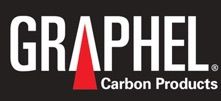5 Reasons to Consider Copper Impregnated Graphite for Electrodes
Copper impregnated graphite is a material with the qualities of both graphite and copper. It is a graphite material manufactured with a controlled amount of interconnected porosity which is then infiltrated with copper by capillary action in a furnace.
Shops generally use copper to make electrodes when they have a need to provide a better surface finish and better flushing. They generally use graphite when they have a need to provide fine detail and a higher metal removal rate. Copper impregnated graphite is chosen for electrodes when qualities from both materials are warranted. A shop looking for a material that results in better surface finish and better flushing, while able to hold finer detail or provide a higher metal removal rate may find a copper-impregnated graphite to be a good choice.
Copper impregnated graphite offers the following features:
1. Increased electrical conductivity and mechanical strength
Electrical conductivity is the result of the movement of the electrically charged particles. In the case of the copper, a single valence electron moves with little resistance and causes a repelling reaction. Copper does not interact with carbon; the two elements are essentially immiscible. The copper is precipitated in ferrite, resulting in a hardening effect.
2. It is an electrode material with a low resistivity value that allows the maximization of the amount of energy.
Electrical resistance, is the total opposition to the passage of electrical current, or the flow of electrons. Resistance depends on current passing through. Copper impregnation reduces the graphite’s overall resistance, allow more energy to pass through more quickly.
3. Copper impregnated graphite offers the combined benefits of the ease of fabrication of graphite, and the burn stability and “safety” of copper.
Graphite is a material that is fairly easy to machine. Like carbon, graphite is a non-metallic substance with an extremely-high sublimation temperature which provides resistance to high- temperature arcs. It is a fine grain-sized material, and tends to have better erosion and wear performance. The impregnation of copper stabilizes the erosion and wear, producing burn safety.
4. Copper impregnated graphite can be used on carbide materials.
Carbide is extremely dense and is slow to machine. Carbide EDMing results in a higher wear ratio, and metal removal is slow. Electrodes made from copper impregnated graphite can be run in reverse polarity and high frequency allowing for the energy needed to burn carbide materials.
5. Copper impregnated graphite yields good surface finish.
Graphite and copper electrodes produce comparatively high surface roughness for the materials at higher values of pulse current. Copper impregnated graphite electrodes offer low values of surface roughness at high discharge current which yield good surface finish.
If you require the better finishes, impregnated graphites provide better finishes. Copper- impregnated grades also allow for stable machining when unfavorable conditions exist – such as poor flushing or when the operator is not very experienced with the application.
Copper impregnated graphite is a material with the qualities of both graphite and copper. It is a great alternative when qualities from both materials are warranted. It is when a shop needs an economical alternative requiring a good finish.
